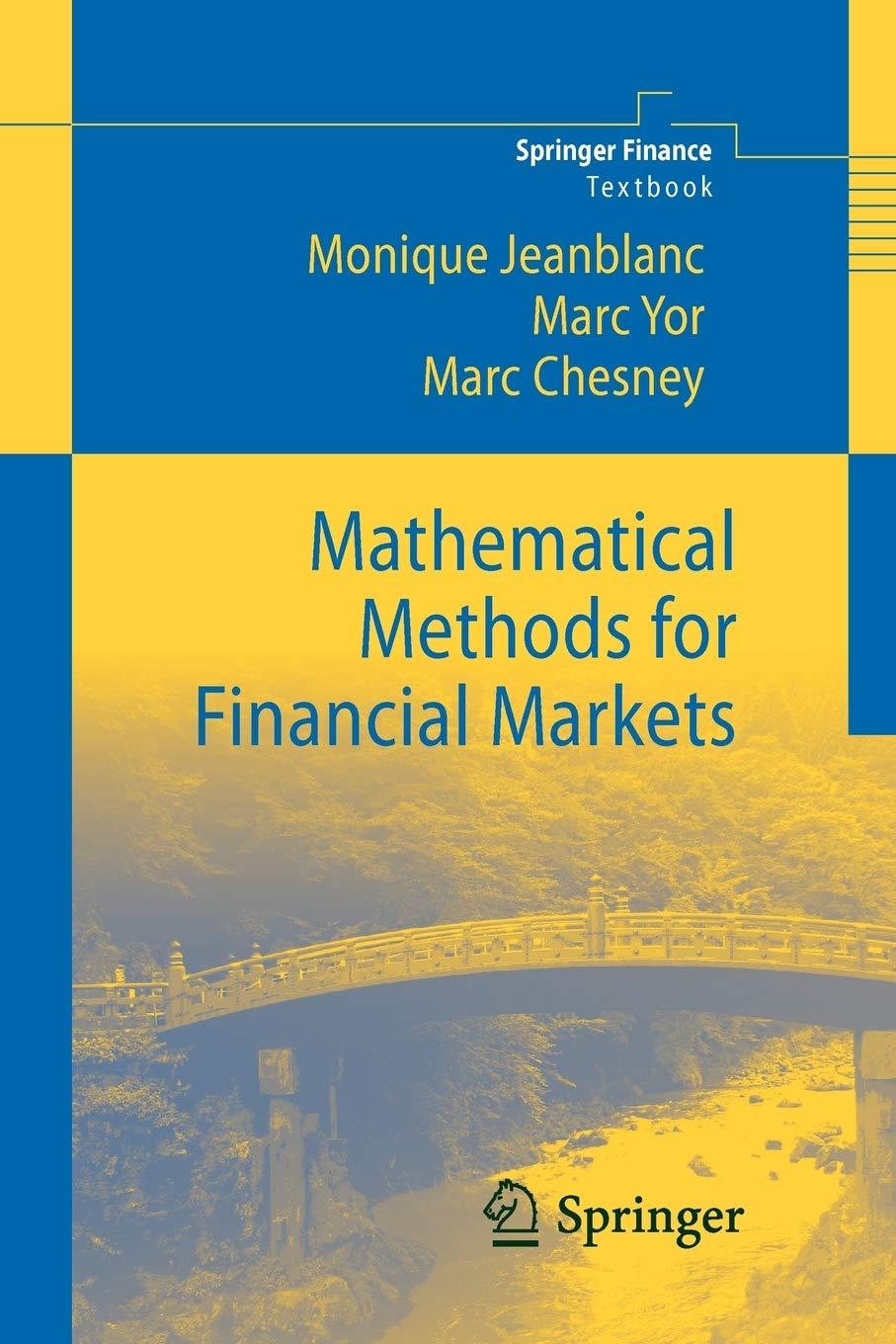Let (left(B_{t}^{(mu)}, t geq 0 ight)) be a Brownian motion with drift (mu), and let (b, c)
Question:
Let \(\left(B_{t}^{(\mu)}, t \geq 0\right)\) be a Brownian motion with drift \(\mu\), and let \(b, c\) be real numbers. Define
\[\begin{aligned}& X_{t}=\exp \left(-c B_{t}^{(\mu)}\right)\left(x+\int_{0}^{t} \exp \left(b B_{s}^{(\mu)}\right) d s\right) . \text { Prove that } \\& X_{t}=x-c \int_{0}^{t} X_{s} d B_{s}^{(\mu)}+\frac{c^{2}}{2} \int_{0}^{t} X_{s} d s+\int_{0}^{t} e^{(b-c) B_{s}^{(\mu)}} d s .\end{aligned}\]
In particular, for \(b=c, X\) is a diffusion with infinitesimal generator
\[\frac{c^{2}}{2} x^{2} \partial_{x x}+\left[\left(\frac{c^{2}}{2}-c \mu\right) x+1\right] \partial_{x}\]
Fantastic news! We've Found the answer you've been seeking!
Step by Step Answer:
Related Book For 

Mathematical Methods For Financial Markets
ISBN: 9781447125242
1st Edition
Authors: Monique Jeanblanc, Marc Yor, Marc Chesney
Question Posted:





